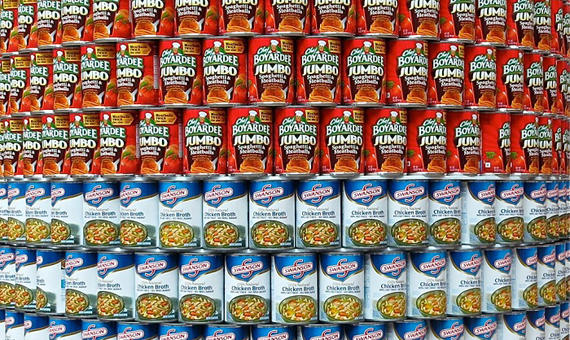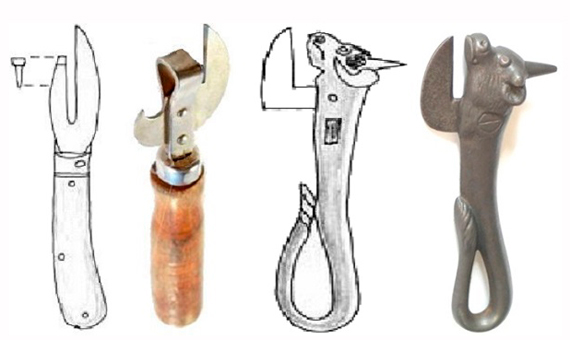The story of the invention is rich in genius, but there were also slips or oversights that are almost incomprehensible. When in 1810 the English merchant Peter Durand received the first patent for the preservation of food in soldered metal cylinders, and two years later the English engineer Bryan Donkin launched the first mass production factory, these new cans brought to humanity one of the greatest advances in the history of food. But both Durand and Donkin overlooked one small detail: how to open them.
In fact, the appearance of the first canned food is earlier; at least from 1772, the Dutch navy was using them on a small scale. Both the Dutch cans as well as those of Donkin were made of iron, so that the container outweighed the content. But above all, these cans of wrought iron were almost impregnable fortresses. “If an inventor comes up with a good solution to a problem –how to preserve foods for periods of time and withstanding the rigors of transportation–, it is not always scrutinized by its inventor for its faults,” explained engineer and historian of technology Henry Petroski, a professor of civil engineering at Duke University (USA) to OpenMind.
Opening cans with a gunshot
According to the book A Complete Course in Canning and Related Processes (Susan Featherstone, ed., Woodhead Publishing, 14ª edition, 2015) at that time “canned food used to come with the written instructions: cut around the top near the outer edge with a chisel and hammer“. In practice, soldiers and explorers, the first to enjoy the benefits of food with a long-life, used to resort to more or less imaginative methods, from bayonets to gunshots, including smashing them with a rock.
The first rational attempt by the human being to find a practical and safe way to open the containers that he had created did not arrive until several decades later, but it was thanks to an innovation. “With the development of thinner walled cans made of steel, solving the problem became easier”, said Petroski. In 1855, the British surgical instrument maker Robert Yeates introduced the first opener: a wooden handle with a claw-shaped blade that dug into the lid and was made to laboriously turn around the edge. Three years later, the American Ezra Warner patented a similar but more complex system with replaceable parts.

However, those early openers were not much simpler to use than the hammer and chisel. According to Featherstone, such utensils “never left the grocery store, as it was deemed to be too dangerous for ordinary people to use; the store clerk had to open each can before it was taken away”. However, the first one that was created for domestic use, shaped like a bull’s head, worked similarly to the pioneer models.
In 1866, a great innovation arrived: the first easy opening lid for tin cans. On October 2, the New Yorker J. Osterhoudt patented a lid with a tab that opened by being rolled up. While this idea –which we usually identify with cans of sardines– has lasted until today, an even more popular mechanism for domestic use would soon arrive: the circular blade.
A can opener shaped like a compass
The first design, from 1870, was the work of the American William Lyman. Its use was cumbersome since it was used like a compass: a metal nail was dug into the centre and a circle was then opened with the sharp wheel. Almost 55 years later, a second toothed wheel was attached to the edge of the can to avoid puncturing the lid, and in 1931 a system was applied so that the can could be grabbed with just one hand. That same year, the American Preston West patented the first electric can opener, though it would not reach home kitchens until 1956.

From that time on, new designs have not ceased to appear: manual, mechanized, or portable, made for the table or for the wall… Despite the competition, “some of the earliest designs can dominate the market because of their simplicity of operation, basic effectiveness, or low cost,” says Petroski. This is the case with the simple opener with the hinged triangular blade, a classic in kitchens and on outings, which was designed in 1942 for the US military.
If today many cans come with a tab to open them without utensils, we owe our debt to the American Ermal Fraze, who during a picnic in 1959 was forced to open a can of beer using the bumper of a car because he had forgotten the can opener. “Thinking there must be an easier way, he later stayed up all night until he came up with the pull tab,” said his obituary in the New York Times in 1989. Nowadays, the humble can opener has almost been relegated to the junk drawer, but that is where we will always find it, waiting to fulfill its role.
Comments on this publication